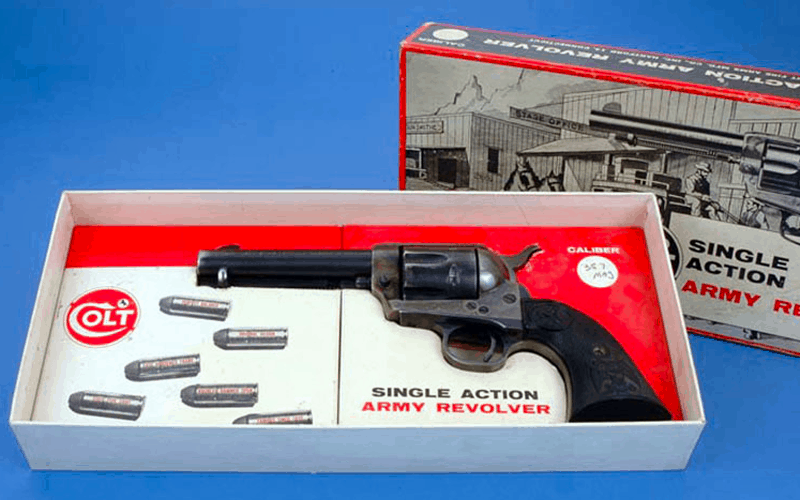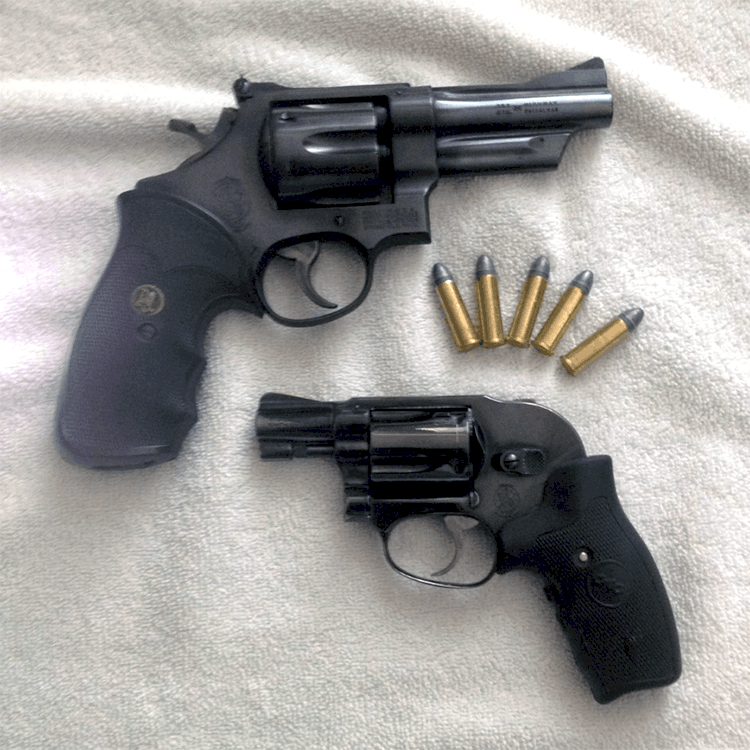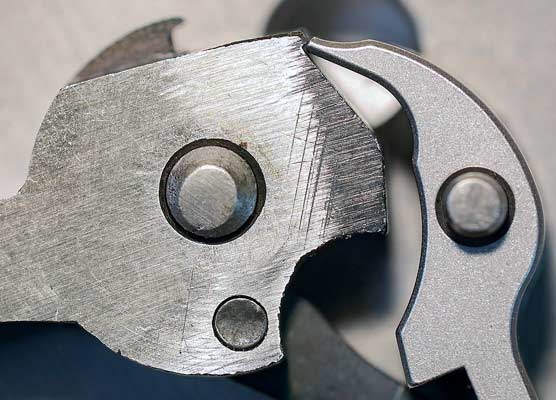Cowboy Philosophy
Wheelgun Diaries
They say every gun has a story. A reader submission series from American Handgunner, Wheelgun Diaries seeks to tell some of those stories through the words of revolver owners.
The following stories were shared by email with permission to publish.
Cowboy Philosophy
The summer of 1967 was the gap between my freshman and sophomore years at University of North Carolina, Greensboro. To keep suitably occupied, I took an introductory philosophy class at 8 am each morning, then drove to Jamestown to open and run the Pilot Life Insurance Company snack bar at their swimming pool and country club.
I was flush with money from my summer job, and with paperback philosophy books costing just 95 cents, I decided to order a handgun from Southside Hardware in Greensboro — the most expensive gun they stocked. The Colt SAA was the most expensive handgun Colt sold, yet it came in a cardboard box. I chose to pay $5 more for walnut grips, as the hard rubber grips seemed cheap, and an extra $5 for the handgun permit meant I was in business. My .45 Long Colt SAA, blued with a case-hardened frame and 4.75” barrel, ordered from Hartford, Connecticut, was like a time machine. It was a connection to every conman, lawman, and cowboy who ever carried the Single Action.
When my Colt revolver arrived, I was beyond excited. The gun had remained unchanged since 1873! The U.S. Army had progressed to the Colt .45 Auto, but history was important to me. My handgun design was over 90 years old and spoke volumes of the history of the American West. Growing up watching Westerns, living in New Mexico on the Llano Estacado and riding horses, I loved the idea of the cowboy life.
One day I decided to take my new Colt to work and show it to my classmate, Gordon. (Gordon and his father reloaded and were serious shooters.) I arrived on campus early to find a convenient parking space and was in class by 7:45 am. My revolver was in the box sent by Colt, and after showing it to Gordon, we passed it around the class. Seats were in a U-shape so all could discuss philosophy readings of the night before. Some students looked at my handgun, others just passed the box to the next student. Dr. Warren Ashby, with a divinity degree from Yale and a PhD in Religion and Christian Ethics, watched but said nothing. When class was about to begin, someone passed my Colt back to me and I placed it under my chair.
Of course, I was extremely naïve to bring a gun to university and perhaps more so, to a philosophy class. Dr. Ashby never said a word, never called me to talk after class or warn me to avoid bring guns to class in the future. The world, my world, has changed a lot since then.
Phillip Jones
Long Live Wheelguns
My Smith & Wesson Model 49 was purchased in the late ‘70s. It was my first backup/off duty gun as we were issued the man-stopper .38 Special RNL back then. I don’t even recall when we were allowed to switch to hollow points.
This gun rode on my ankle for years, though it didn’t have the Crimson Trace grips on it back then. For all its hard0earned years, it hardly shows any real wear. And to those who think these are belly guns, I can consistently hit my FBI Q targets at 50 yards, double action. I even wore a nickel Model 49 at my wedding in 1982.
The Smith & Wesson Model 28 was my first duty gun. We purchased our own guns, so I got the biggest, baddest looking gun I could, of course. Between the 44 oz. of gun, a foot-long Motorola radio and other gear, it was heavy walking the beat in those days. I later replaced it with a Model 10.
Unfortunately, this isn’t my original Model 28, but I found this replacement a number of years back. They come out of the safe and get shot from time to time, and the Model 49 occasionally gets carried. Long-live wheelguns!
Sgt. Jim Lieto (Ret.)
Smooth As Glass
I started my law enforcement career at the Mattawan Police Department (Michigan) in the fall of 1976. I worked as a volunteer reserve officer for three years. Shortly after I started, I purchased a used Smith & Wesson Model 66, as the Model 10s the Department provided were well-used and worn
In 1979, I attended the police academy at Kalamazoo Valley Community College and received my certification. I worked for a short time with Mattawan P.D. as a part-time officer and then hired into the neighboring Lawton Police Department as a full-time officer in January 1980. They would let you carry a personally owned .357 Mag or .38 Spl, but you had to carry .38 +P ammo so I chose my Model 66 as my duty weapon.
That Model 66 served me well and is what I qualified with when I became a Michigan Police Firearms Instructor in 1983. Unfortunately, I let it go in 1985 or 1986 when I purchased a brand-new Smith & Wesson Model 686. It served as my primary duty sidearm until we switched to high capacity 9mm pistols in 1991, following the lead of the Michigan State Police and many other agencies in our area.
I have owned many S&W revolvers, but since that Model 66, none have ever equaled its smooth as glass double-action trigger pull of that revolver. Now as a retired police officer, I wish I had my Model 66 back — not just because of the excellent trigger, but because it was noticeably lighter on my aging hip. As has been said before, hindsight is 20/20.
Thomas Verburg
Submit Your Wheelgun Diaries
Do you have a wheelgun story to tell? Send us a photo and your story by email and you could see it published here and featured in our weekly Wheelgun Wednesday newsletter.
Send to: [email protected]







